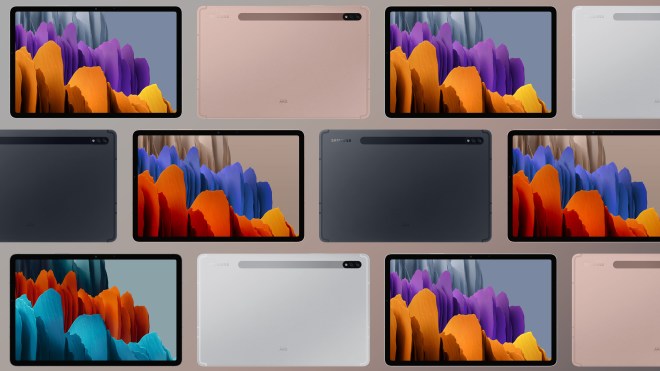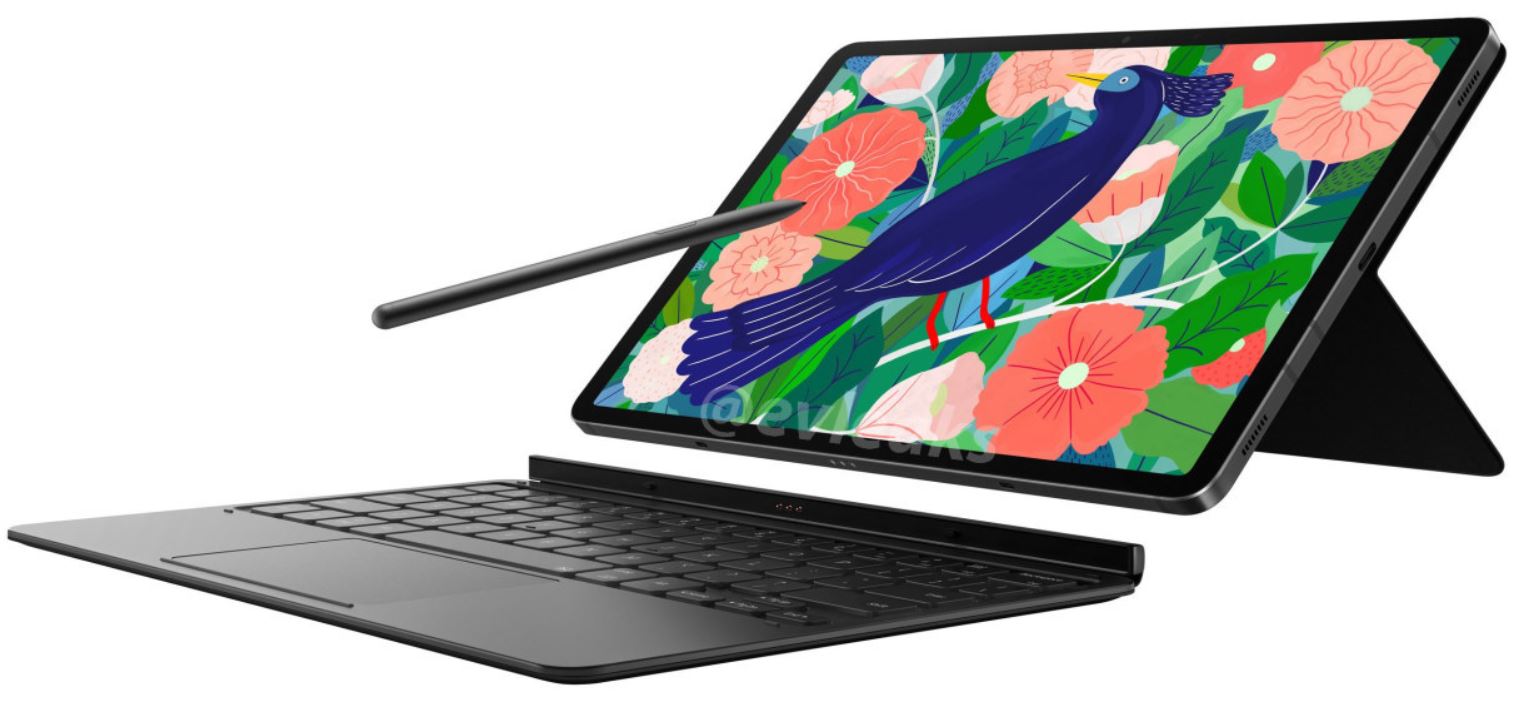Galaxy Tab S7 leak reveals how Samsung will improve the best Android tablet
Mark your calendars, the Galaxy Tab S7 could arrive on Aug 5

Samsung is expected to reveal the Galaxy Tab S7 tablet on August 5 at its Galaxy Unpacked event, but it won't be much of a surprise thanks to a flurry of reliable leaks.
The latest divulges almost everything there is to know about the two versions of this upcoming flagship Android tablet. Published by Roland Quandt of the German tech site WinFuture, the leak reveals that the 11-inch Galaxy Tab S7 will have an LTPS TFT display while the 12.4-inch Galaxy Tab S7 Plus will flaunt an AMOLED panel.
- Best tablets in 2020
- Samsung Galaxy Tab S6 Review
- Galaxy Tab S6 vs iPad Pro: Which Tablet Should You Buy?
Galaxy Tab S7 and S7 Plus specs
| Row 0 - Cell 0 | Galaxy Tab S7 | Galaxy Tab S7 Plus |
| Display (resolution, refresh rate) | 11 inch LCD, 2560 x 1600, 120 Hz | 12.4 inch AMOLED, 2800 x 1752, 120 Hz |
| CPU | Qualcomm Snapdragon 865 Plus | Qualcomm Snapdragon 865 Plus |
| RAM | 6GB | 6GB |
| Storage | 128GB, 256GB | 128GB. 256GB |
| MicroSD slot | Yes | Yes |
| Rear cameras | 13 MP main (f/2.0), 5 MP ultra wide-angle | 13 MP main (f/2.0), 5 MP ultra wide-angle |
| Front camera | 8 MP (f/2.0) | 8 MP (f/2.0) |
| Battery | 7,040 mAh | 10,090 mAh |
| Colors | Mystic Black, Mystic Bronze, Mystic Silver | Mystic Black, Mystic Bronze, Mystic Silver |
| Size | 9.99 x 6.51 x 0.25 inches | 11.22 x 7.2 x 0.22 inches |
| Weight | 1.1 pounds | 1.3 pounds |
Galaxy Tab S7 displays
Both screens will support a 120Hz refresh rate but the 11-inch screen will actually get brighter, at 500 nits versus the AMOLED's 420 nits. Don't let that fool you. AMOLED is a superior display technology that enables darker black levels and higher contrast.
Moreover, the Galaxy S7's 11-inch screen will have a resolution of 2,560 x 1,600 pixels (274 pixels per inch) whereas the Galaxy S7 Plus's 12.4-inch panel is 2,800 x 1,752 pixels (287 PPI).
Galaxy Tab S7 performance and features
On the inside, these high-end Android tablets will be powered by a Snapdragon 865 SoC with 6GB of RAM and either 128GB or 256GB of storage. Another highlight is the optional 5G support, which should enable superfast connectivity when you're away from home.
While their performance should be comparable, the Galaxy Tab S7 has a fingerprint sensor on the side instead of embedded in the display, as it is on the Galaxy Tab S7 Plus. The larger model also has a much bigger battery, at 10,090 mAh versus 7,040 mAh in the smaller version. The Galaxy Tab S7 Plus makes up for its larger, power-draining screen with 16 hours of runtime whereas the Galaxy Tab S7 should survive 15 hours on a charge.
Going back to their similarities, both tablets will have dual 13-megapixel and 5MP rear-facing cameras along with a single 8MP selfie cam. And both models will be available in Mystic Black, Mystic Bronze and Mystic Silver. It's also worth pointing out that they will run Android 10 with DeX, Samsung's own desktop interface.
Stay in the know with Laptop Mag
Get our in-depth reviews, helpful tips, great deals, and the biggest news stories delivered to your inbox.
Galaxy Tab S7 design

As for the design, the Galaxy Tab S7 looks similar to the Galaxy Tab S6 but with a sleeker camera module and magnetic holder/charger for the S Pen. Speaking of which, Samsung will bundle the Galaxy Tab S7 and S7 Plus with a new S Pen featuring only nine milliseconds of latency.
Both tablets have slim display bezels so your eyes are drawn to their large panels. They are both made of metal and have sound tuned by AKG (which Samsung acquired when it purchased Harman).
At 10 x 6.5 x 0.25 inches and 1.1 pounds, the Galaxy Tab S7 is lighter but a tad thicker than the Galaxy Tab S7 Plus, which comes in at 11.2 x 7.3 x 0.22 inches and 1.3 pounds.
Outlook
If this leak is accurate then Samsung is clearly very confident in its lineup of tablets as it appears to be directly challenging the iPad Pro. The big question now is how much these tablets will cost and whether Samsung dares to get close to the exorbitant price of the iPad Pro.
We'd be surprised if Samsung didn't reveal the Galaxy Tab S7 and Galaxy Tab S7 Plus at its Unpacked event on August 5, so check back in with us for official specs, photos and (fingers crossed) pricing and availability.
Phillip Tracy is the assistant managing editor at Laptop Mag where he reviews laptops, phones and other gadgets while covering the latest industry news. After graduating with a journalism degree from the University of Texas at Austin, Phillip became a tech reporter at the Daily Dot. There, he wrote reviews for a range of gadgets and covered everything from social media trends to cybersecurity. Prior to that, he wrote for RCR Wireless News covering 5G and IoT. When he's not tinkering with devices, you can find Phillip playing video games, reading, traveling or watching soccer.

